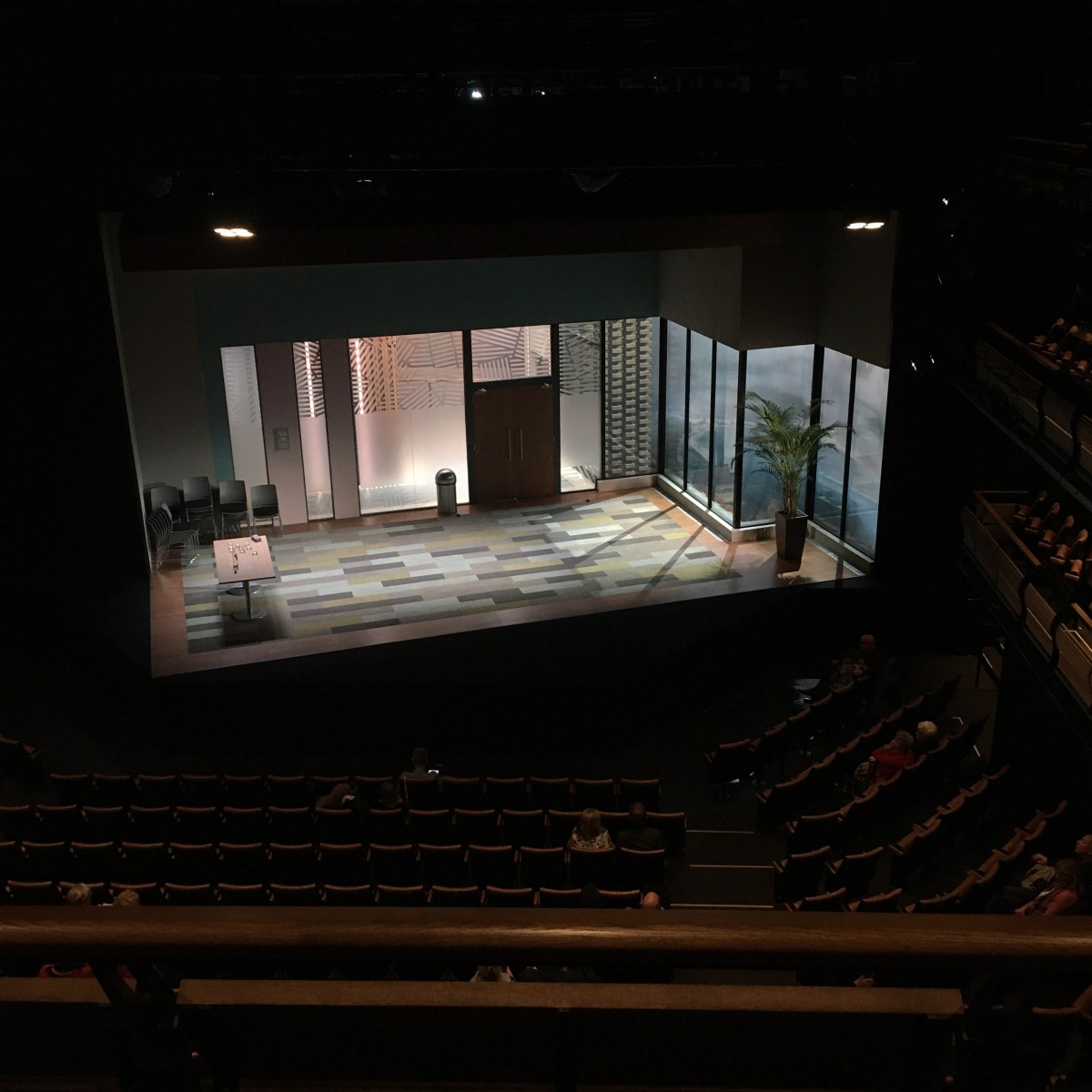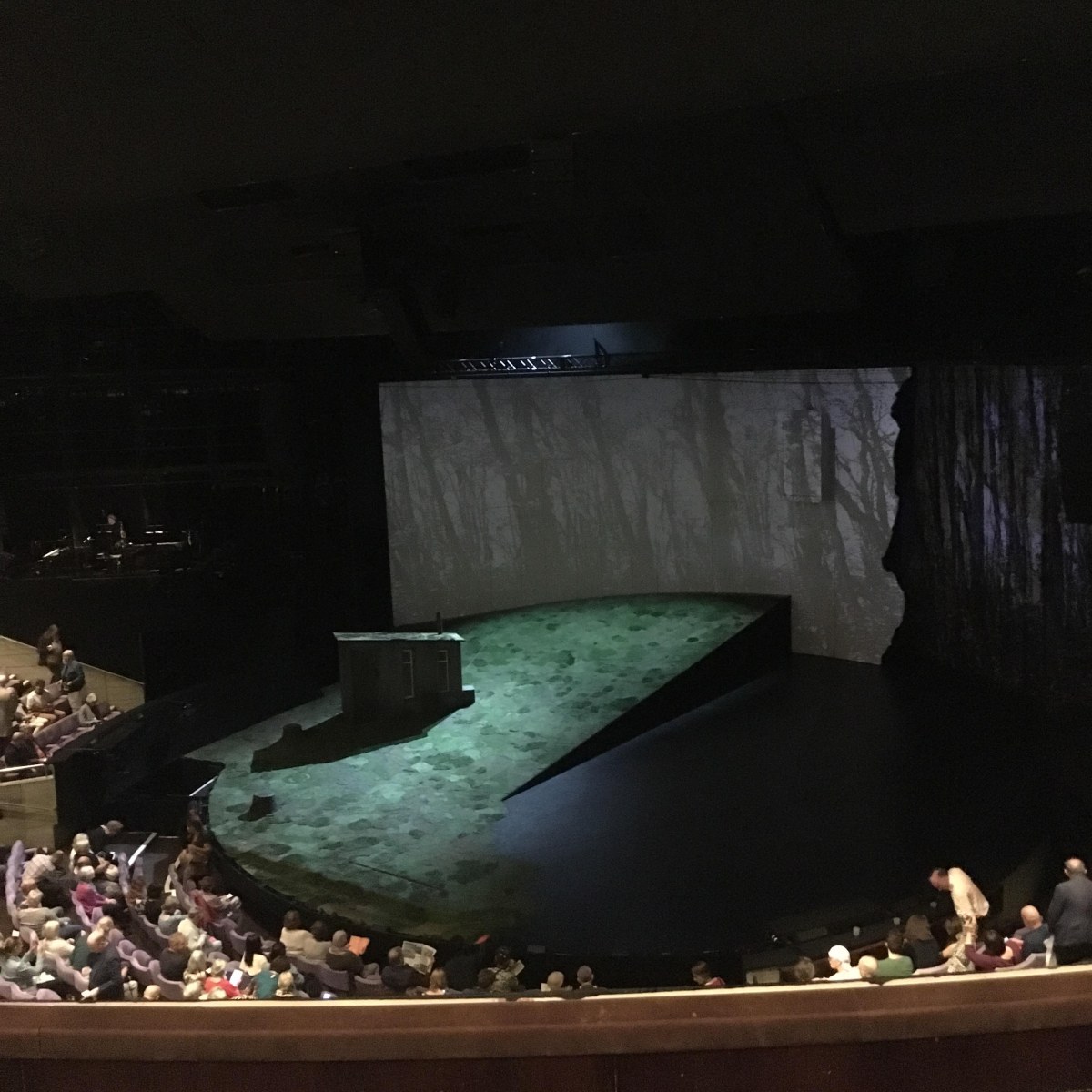Sorry We Missed You (Ken Loach, 2019)
The irony was that I saw this film whilst being pissed at the sort of company central to this film. Continue reading →
Sorry We Missed You (Ken Loach, 2019)
The irony was that I saw this film whilst being pissed at the sort of company central to this film. Continue reading →
Helene Schjerfbeck (Royal Academy of Arts)
We always reach for a short hand, and Schjerfbeck’s is Kahlo crossed with Munch.
The former is easier to see than the latter.

Nancy Harris, Two Ladies (Directed by Nicholas Hytner, Br/dge Theatre
The Bridge Theatre seems to have developed a thing about marathons. We’ve had two one-woman shows without intervals and now here’s what is essentially a two-hander without interval.
“Blake is all about the possibilities of the human imagination. He offers us an escape from the dull realities of everyday life. He challenges us to think beyond the rational and the assumed with fantastical creations such as The First Book of Urizen (1794). We don’t need to know what his bank account looked like at the time, or where he happened to be living. The work can speak for itself without a nagging commentary dragging into the mundane.”
But we’ve had *that* exhibition — at the Tate, at the Ashmolean, at Petworth House. And if you’re reading Blake as escapist, you’re doing him wrong. What Tate has done — and I’m not entirely sure it is a great exhibition— is to show a whole lot of his prints, illustrated books and tempura in chronological order. You therefore have the opportunity to read and examine his poetical works in complete versions. If you are diligent, you can read the scratchy handwriting and admire the marginal illustrations in context.
This will take some time.
And longer given there’s some bloke taking some time to examine plate eight when you’ve looked at plate seven for all the details.
I was lucky enough to acquire facsimile editions of Milton, The Marriage of Heaven and Hell and so on second hand, and I suspect they are easier to read. There’s not the buzz of the actual bits of paper as handled by Blake, but it’s a little less exhausting. There’s also the sense that you can be clear of the order — the prints are hung left to right, but some you approach from the end so I looked at The Pilgrim’s Progress and America in reverse order.
This isn’t literary criticism, so you won’t normally get the hint that when he is writing his poetry his history of the American or French Revolutions there’s probably the Matter of Britain (or at least of Albion) and a reengagement with the Bible via Milton, not to mention his own personal mythology which means that several of his slogans are in the mouths of not necessarily trustworthy character. His proverbs of hell, for example, are at the least ironic. If you don’t know who or what the four Zoas are, you won’t learn it here. My collected Blake volumes— Penguin and Oxford editions, which may also include most of the prose and marginalia, are several inches thick.
But you can get the sense of variant versions of plates, so that no two illustrated books are the same. The exhibition is a little vague on his revolutionary printing technique, whereas I think the Ashmoleon exhibition was clearer — and had a printer on display.
I think it’s useful to get a sense of what he was paid for each print, to get a sense of what the labour of engraving brought in and therefore to be clearer why his books were doomed to financial failure. On the other hand, when you read that £1 in 1800 is equivalent to £100 now and he got paid £1000 for that, was it actually a lot of money? The narrative I’m familiar with is that of the starving artist, but presumably it took a long time to design the book of Job. It is interesting to know his patrons and the circles he moved in, even if it cuts down his lone genius PR (which Munch may have followed).
The Earl and Countess of Egremont are an interesting couple — isn’t the Earl also part of the story of Turner — as Elizabeth Ilive was an amateur scientist, mother to eight of the Earl’s children, and only married to him 1801-1803. (He seems to have at least forty children and fifteen mistresses, so the Tate’s “unconventional relationship” is a little euphemistic.) Elizabeth commissioned a number of works, especially when Blake was living nearby. Meanwhile, Thomas Butts bought pictures and prints over thirty years: “a well paid civil servant, with a side-line as a coal merchant, and also ran a girl’s school.”
The way you do.
And then there’s the rival engravers, who are allowed to take Blake’s designs and scratch with different tools and produce different images as a result. This is why Blake is different and unique and transcends a frankly limited range of male and female shapes. It’s not a new display here, but compare his Canterbury Pilgrims to the other versions.
There are a score of works that are worth the admission on their own — the glorious Glad Day, the dozen or so tempura works that are all too rarely on display at the Clore Gallery in the Tate and the Ancient of Days I saw at the Whitworth thirty years ago. I will return to these.

The exhibition comes with a trigger warning:
Please be aware that the art of William Blake contains strong and sometimes challenging imagery, including some depictions of cruelty, suffering, sexual violence and the brutal treatment of enslaved people.
His slave engravings are troubling, but perhaps they are meant to be. You just have to read Songs of Innocence and Experience to learn of the chimney sweeper, the sex worker, the slave and so on, and there’s something a little special pleading about the Lamb.
If this is escapism, you are made clear what he is escaping from.
Quentin Blake: The New Dress; Roy Oxlade & David Bomberg; Roy Oxlade: Shine Out Fair Sun; Tal R: Eventually All Museums Will Be Ships (Hastings Contemporary)
About a decade ago, the Jedward Foundation brought culture to Hastings. Hastings was having none of it, it would appear, preferring a coach park in the Old Town. And now what appears to be a dark wood clapperboard gallery has rebranded as Hastings Contemporary and the splendid collection of rather brown British twentieth century paintings has vanished. This is a shame, but the excellent Paula Rego exhibition will be mirrored by one by her late husband, Victor Willing. In the meantime, we have an Israeli Danish artist I’d never heard of, a mid century British artist I’d never heard of and the latter’s tutor. And a bonus room by Quentin Blake, who lives around the corner and remains prolific as ever. His drawings of Her New Dress are as charming as you’d expect.
But it is David Bomberg who steals the show and inevitably comes off better than his pupil Roy Oxlade in the same room. His art seems to be from an elevated perspective — Tower Bridge and the streets of London from a rooftop, the great bridge (aqueduct?) of Ronda from a distance, an odd perspective on a Ronda cathedral. He had dabbled in Vorticism, even before there was such a thing, but it is the perspective and diagonals that he keeps. Meanwhile there’s a hint of Walter Sickert in the colour range. More brown.
I kept recalling (and miss) the paintings of Palestine I saw at Towner — payed for by the Zionist Organisation in the 1920s — of a curiously unpopulated Jerusalem and environs from on high.
In the 1950s, impoverished and suffering from ill health, he worked in a bakery at Borough and taught art, with students including Frank Auerbach, Leon Kossoff and Roy Oxlade. I didn’t know Oxlade’s work, and inevitably I compared his paintings to the heavily contoured palimpsests of the other two. His work sometimes also includes a three dimensionality of layered paint, but not as heavy as Kossoff’s. His figures are curiously isolated, stripped of a spatial context, hanging in space. Whilst this isn’t always the case, he has a habit of naming his paintings Colour Object — White Back, Yellow Lamp and so on. He can draw a reclining nude, but not the supporting couch or bed, substituting abstract backgrounds. Presumably his Two Cherries are on a table, but you wouldn’t know it.
He wrote that “Paintings need the personality of a ‘face’, things, points of focus, without them they are like heads of people with eye-sockets.” I confess I struggled to find that personality but I think he needs more attention. At his best, his work reminds me of Cy Twombly, but Abstract Expressionism isn’t quite the right label. He claims to be reaching for a sense of authenticity, interested in “things, trees, houses, cats, people.” I wanted more cats.
Tal R was also new to me, and the title inevitably makes you think of the boats piled on the shingle visible through the first floor windows of the gallery. The ships are tall cruisers, a striking blue, but the main room is dominated by dozens of crayon drawings which are rough landscapes. In his canvases, the colours are scarcely less subtle, and they reward a slow looking. He’s an Israeli born artist, long resident in Copenhagen and I am assuming he’s Jewish, but the exhibition doesn’t state this. This becomes relevant with the boy in striped pyjamas and mask, who I took to be stood by a bed, Masken (2019). I wonder know if I misread the perspective and it’s oartway down a staircase. At first sight it seems naive, but perhaps is an inmate of a concentration camp. And then there’s Red House (2019), where the flat red colour echoes Munch’s red ivy covered house and the painted wood of Sohlberg, although they are Norwegian rather than Danish.
Also striking is Lords of Kolbojnik (2002-2003), that last word a kibbutz used term for the rubbish left over from communal meals. It is a colourful collage, leaning towards Pop Art.
 So an interesting start as the gallery enters a new phase — Hastings will still get culture, even starved of some favourite images.
So an interesting start as the gallery enters a new phase — Hastings will still get culture, even starved of some favourite images.

David Hare after Henrik Ibsen, Peter Gynt (Directed by Jonathan Kent, Olivier Theatre, National Theatre)
Several things occurred to me whilst waiting for this play to start: the auditorium was not much more than half full; I probably hadn’t been here since the Dench/Hopkins Antony and Cleopatra; and I had no idea what this play was about.
I used as various times to maintain a Googlesheet of exhibitions I might possibly interested in going to — then life intervened repeatedly, and it got out of date. Over the past few months I’ve been updating it and there are still a few venues missing, but it’s a l-o-n-g list and I need to work out a decent format still. I have a list sorted by closing date and by venue, and below is opening soon.
Information presented in good faith — a lot of mistakes came to light in this update — and check website before travelling. There’s a south eastern bias, plus major cities in Wales, Scotland and Ireland (I still haven’t been to Northern Ireland). Additions welcome. Continue reading →